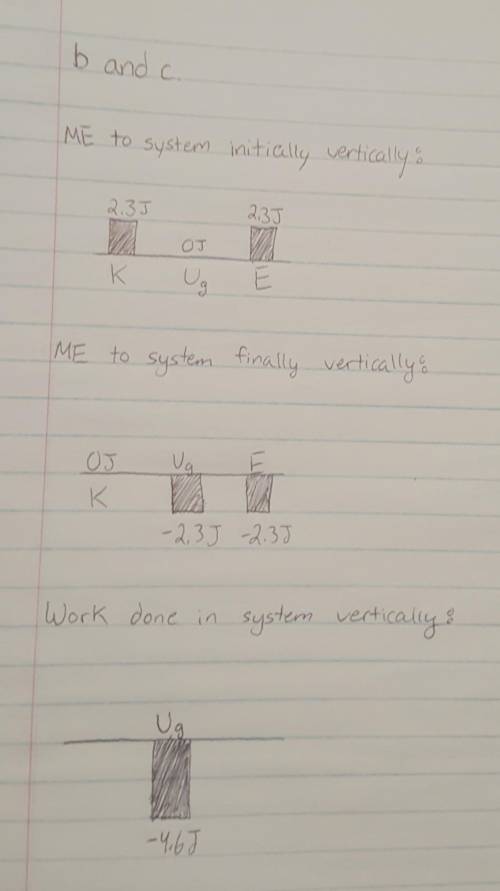
A golf ball with a mass of 46g is hit from the ground with a speed of 20m/s. It takes that ball 1 second to reach its highest point. For all parts assume that the air resistance is negligible. The system includes the golf stick, golf ball, and Earth. I created an energy bar chart attached below. The part where I'm getting stuck is figuring out what is doing the negative work. At first I thought it was the Earth but it can't be because it is part of the system. Then I started doubting my energy bar chart. The final Ug would be mgh so I did m=0.046(covert from g to kg), g=-10, and h=5(figured out using kinematics). The Ug would then be -2.3. But wouldn't it have to be positive 2.3 for energy to be conserved? But at the same time, how can it be positive; g is always negative? So please clear up this problem, I've been stressing on it too much.


Answers: 1


Another question on Physics

Physics, 22.06.2019 00:30
Using the work energy theorem. what is the velocity of a 850kg car after starting at rest when 13,000j of work is done to it.
Answers: 1

Physics, 22.06.2019 12:00
Under the action of a constant force an object accelerates at 7.8 m/s2. what will the acceleration be if (a) the force is halved? (b) the object's mass is halved? (c) the force and the object's mass are both halved? (d) the force is halved and the object's mass is doubled?
Answers: 3

Physics, 22.06.2019 14:30
What conclusion can be made based on the temperature of soil when the light hits the soil at 0°, 45°, and 90° angles in section 2 of the experiment? did your results support your hypothesis? why or why not?
Answers: 1

Physics, 22.06.2019 21:40
Wo small variable-thrust jets are actuated to keep the spacecraft angular velocity about the z-axis constant at ? 0 = 1.16 rad/s as the two telescoping booms are extended from r1 = 1.18 m to r2 = 4.69 m at a constant rate over a period of 124 seconds. the small 19-kg experiment modules at the ends of the booms may be treated as particles, and the mass of the rigid booms is negligible. determine the necessary thrust t for each jet as a function of time where t = 0 is the time when the telescoping action is begun. after you have the general expression for t, answer the questions. show work.
Answers: 1
You know the right answer?
A golf ball with a mass of 46g is hit from the ground with a speed of 20m/s. It takes that ball 1 se...
Questions




Mathematics, 22.01.2020 23:31



Mathematics, 22.01.2020 23:31

English, 22.01.2020 23:31

History, 22.01.2020 23:31

Mathematics, 22.01.2020 23:31






Mathematics, 22.01.2020 23:31


SAT, 22.01.2020 23:31


Mathematics, 22.01.2020 23:31



